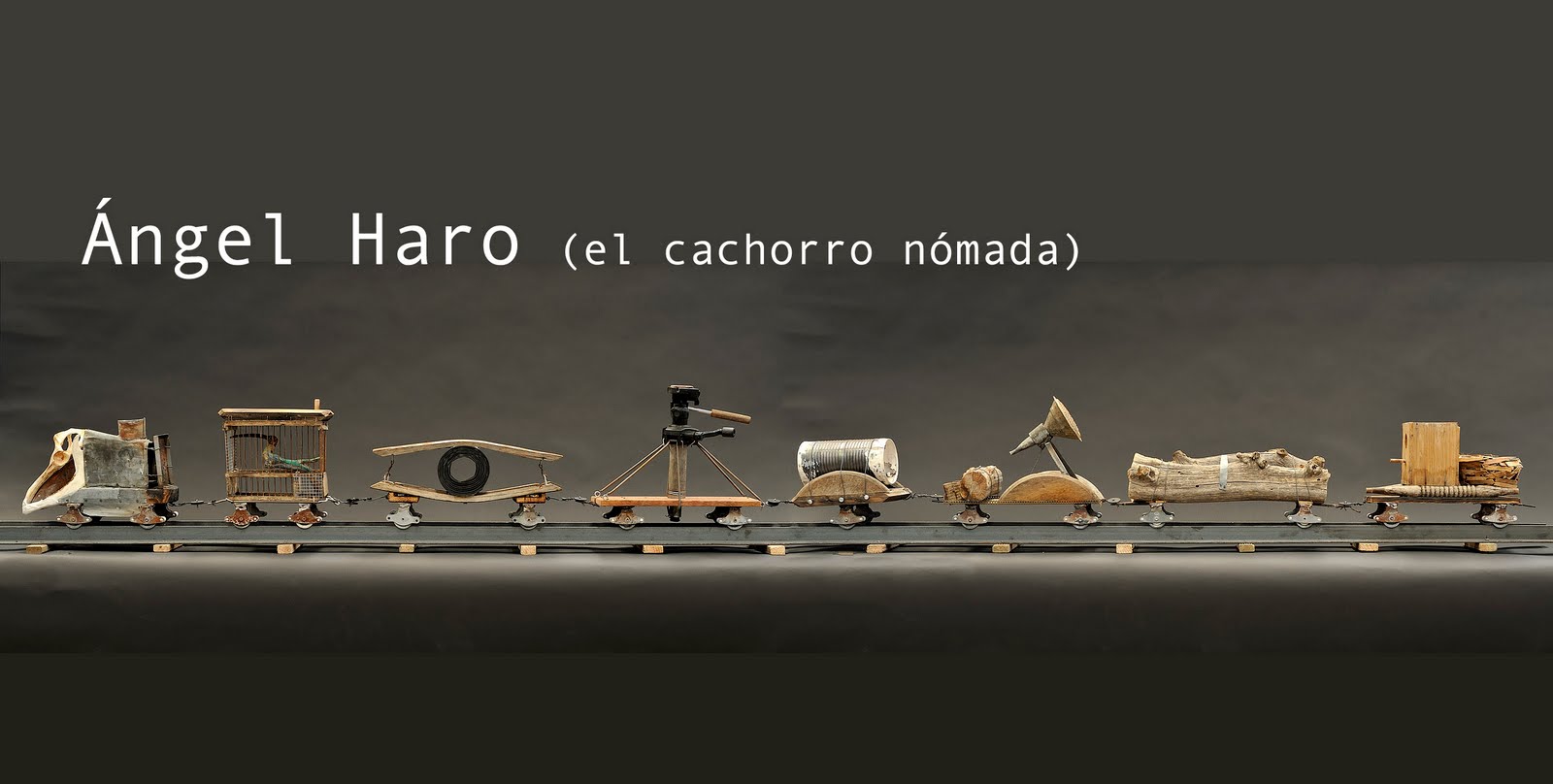Without ever having set foot in Africa, the historic avant-garde saw the immediacy of the expressive potential of African masks and ancestral figurines. For me, a South African, Ángel Haro in a very brief visit there, goes beyond those images to perceive three important aspects of Africa. Firstly the rays of light which penetrate the cracks in the depressing tones with which the Dark Continent is typically presented. Secondly, he has detected the country’s life forces. He has also reawakened in this South African the realization that in Africa the extraordinary is ordinary.
1. In the “Black Diamond” series, those rays of light dapple the ever-moving sea of facial variations that Ángel has inversely modelled on ancestor and ritual masks. Those same rays dignify an Alexandra shack; giving a clairvoyance to looking outwards from the inside of one’s palace - one that is constructed more with pride than with materials. Those rays also distinguish the superficial from the essential in the Alexandra hospital, and they shatter European rumours that the South African cities, at night, are ghost towns. Thematically the Black Diamond always seeks, traps and shares its light. The metaphor of its transformation from carbon appears in the “Notes” series accompanied by Nelson Mandela, emblematic of South Africa’s own transformation. The juxtaposed “Diamond Ladies”, and the “African Art Museum", provoke questions about the superimposition of western order and symbolism on Africa. Capetown’s “Waterfront” also raises the question of the value in Africa, with its priorities so urgent, of yet another Western life force, hedonism.
2. Among Africa’s life forces are the elements from both east and west that for millennia have forcefully moulded the Cape of Storms and for 350 years shaped the culture of the Cape. Spain’s shrinking 17th century Catholic Empire had allowed Amsterdam to found present day New York, and just ten years later other Protestant Low Country settlers had successfully founded a town in the Cape of Good Hope and had introduced their Batavian slaves. The rhythm of that lifestyle was disturbed by the English who used anti-slavery as an excuse to expand their own 19th century empire. The resulting Boer emigration from the Cape collided with the Zulu expansion as would the English 40 years later. These works reflect the life forces of those legendary Zulus of Isandlwana, of Soweto´s “Hector Pieterson” almost one hundred years later, and of other unknown warriors; all of whom were to erode colonialism. Between the closing years of the 19th century and the early years of the 20th the two European colonising forces clashed and after two wars arrived at a peace. Democratic forces returned power to the Boers a further 40 years after that , just when the forces of Harold McMillan’s unstoppable “Winds of Change” began their 40 year southbound journey from Ghana. Both northwards and southwards forces carried with them the sad history of the oppressed becoming the oppressor. In South Africa it took the form of 40 years of apartheid, and still today Ángel’s “Africa Flight” crosses many other African countries whose political history is symbolised by the African mask’s pegged mouth. As a result many disenchanted people have fled from their liberators; often to Europe; ironically following the footsteps of their expelled erstwhile colonial oppressors.
3. In Africa the extraordinary becomes the ordinary. I can identify with the raw, and at times breathless expectation, of Angel´s concept of the hunter implanting himself within one´s eyes and of being the prey. Whether on foot or in car, whether accompanied or not, I have always found the elegant silence and solitude of “Kruger” and other game parks an awesome experience, with or without the reward of a “Big Five” sighting. In this context of animals in their own habitat, I conjure up a recollection of identifying the nearest climbable tree whilst engaging in mutual admiration with a rhinoceros. A feeling not dissimilar to that of Angel´s perplexed colt seeking an escape route. Another bridge for me between the ordinary and the extraordinary is “Indian Ocean at Night” conceived in Maputo Bay. It conveys to me the red rawness of Louis Trichardt’s trials and tribulations; of Cecil Rhodes’ burning ambitions; of the red light district role of Lourenço Marques (present day Maputo) during apartheid; of its flirtation with communism now discredited in Africa, and of the bloody civil war. These days the reddishness represents the spreading maturity of an uninterrupted economic recovery; and the vibrant, lighted and enlightened city on a bay that carries galleon histories and the wakes of the crafts traversing it.
These thoughts are not those of an art critic but those of one for whom Africa is in the blood. Space, the overlap of the extraordinary and the ordinary, and the vibrant intermix of cultures and personalities that constitute Africa, are all enriching experiences. Ángel has been able to express those enriching forces, not only visually, but also as he himself says “in a poetic way” in the commentaries that accompany the works. Working and living in South Africa and in seven of Africa’s central and southern countries for nearly 40 years, I realize that Africa has as many faces as a diamond and that the first experiences such as those of Ángel, grow with each further cultural variation and that all of these stimulate the visitor’s perspective of the extraordinary. In these works, I therefore appreciate the artistic perspectives and insights tracing the life forces that connect the intangible and the visible –the natural and the manmade; the present and the past and portraying them with a depth that demands concentration and reflection.
Interview for the 2001 exhibition "Black diamond"

No hay comentarios:
Publicar un comentario